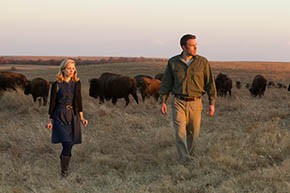‘To the wonder’

Filmmaker Terrence Malick is known for his quiet, visually absorbing, ruminative films. He is also known for taking a long time—as many as 20 years—between films. But now, only two years after The Tree of Life, Malick has written, directed and released To the Wonder. With these last two, film critic David Edelstein writes, Malick has evolved “into a blend of director and Christian minister.” These most recent movies are “psalms writ on film. Again and again Malick’s characters ask why we’re here, how we might locate the presence of the Almighty in the everyday, and how we can accommodate ourselves to the expulsion from the Garden.”
To the Wonder focuses on two lovers: Neil (played by Ben Affleck) and Marina (Olga Kurylenko). We meet them in France, reveling in the sights and places of Paris. Their relationship is erotically charged, but they also find exaltation in the beautiful world around them. Early on they visit a medieval abbey on the coast of Normandy, Mont Saint-Michel.
With its earliest building dating to the 11th century, Mont Saint-Michel is a magnificent symbol dating from the Age of Faith, when believing in the Christian God was second nature. Marina and Neil are duly impressed. Though they do not share the ready faith of the people who communed there centuries earlier, they are struck by a sense of transcendence. They climb the steps to the top of the abbey and come out on a courtyard with gardens and cloistered hallways surrounding it. “We climbed the steps . . . to the wonder,” remarks Marina.




